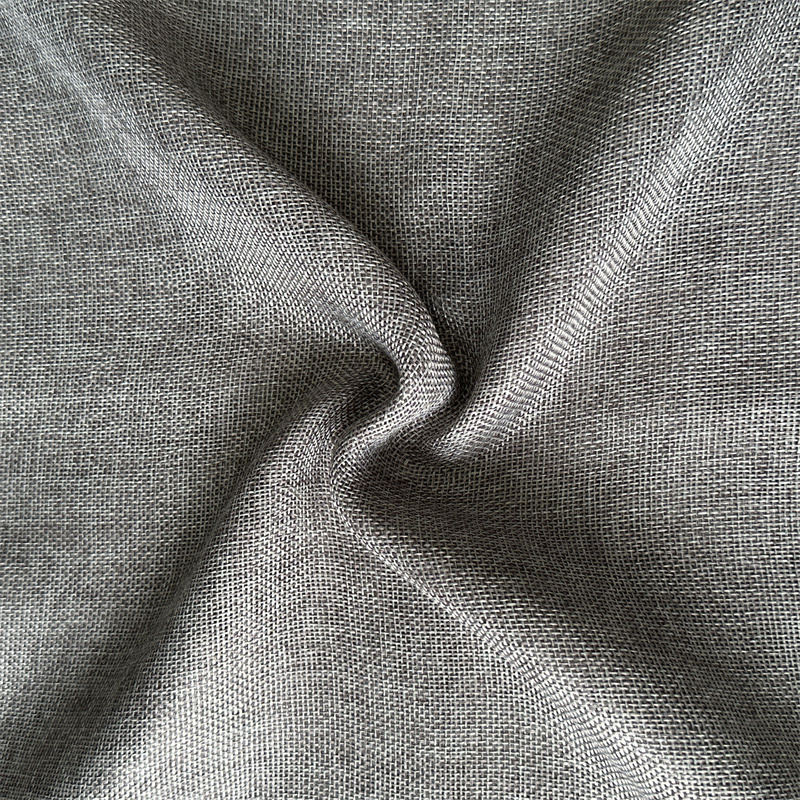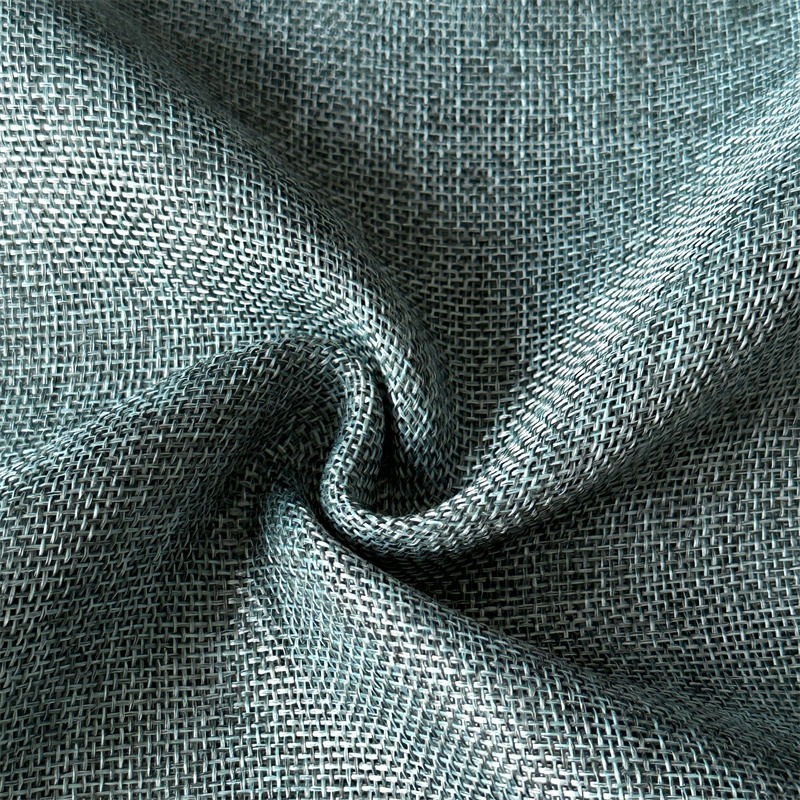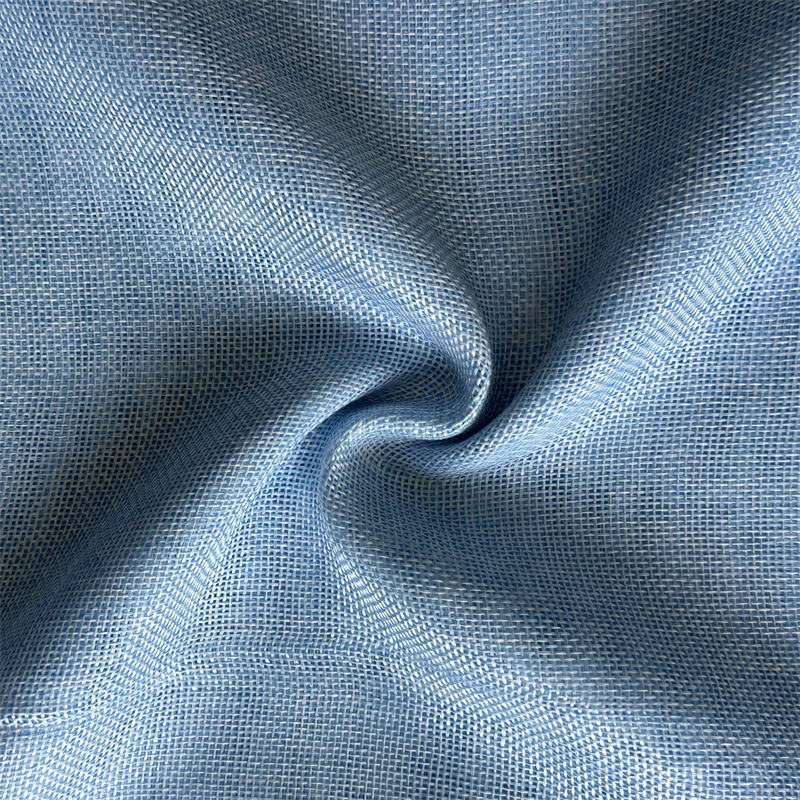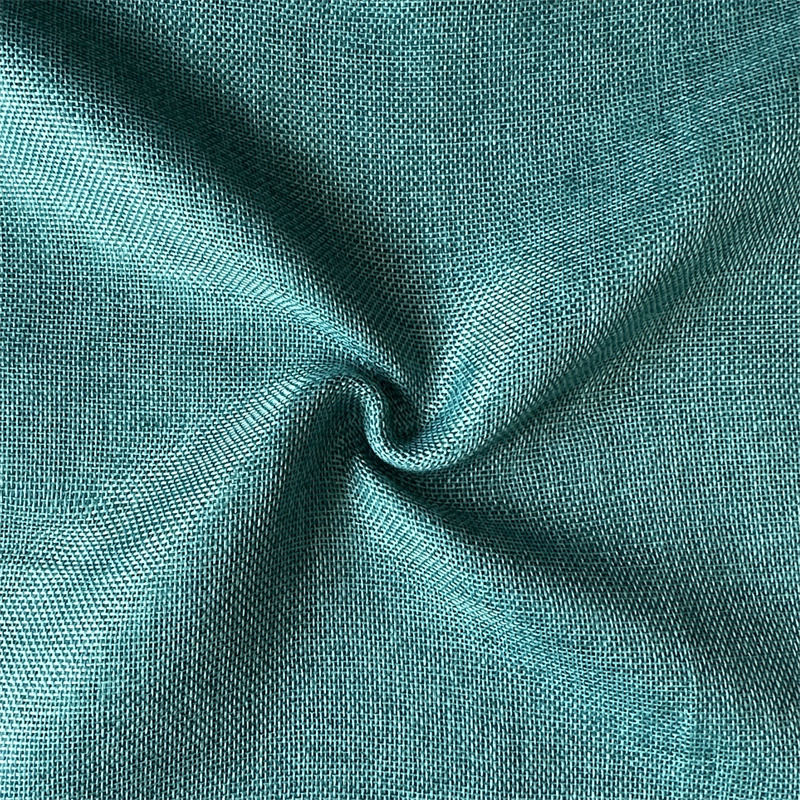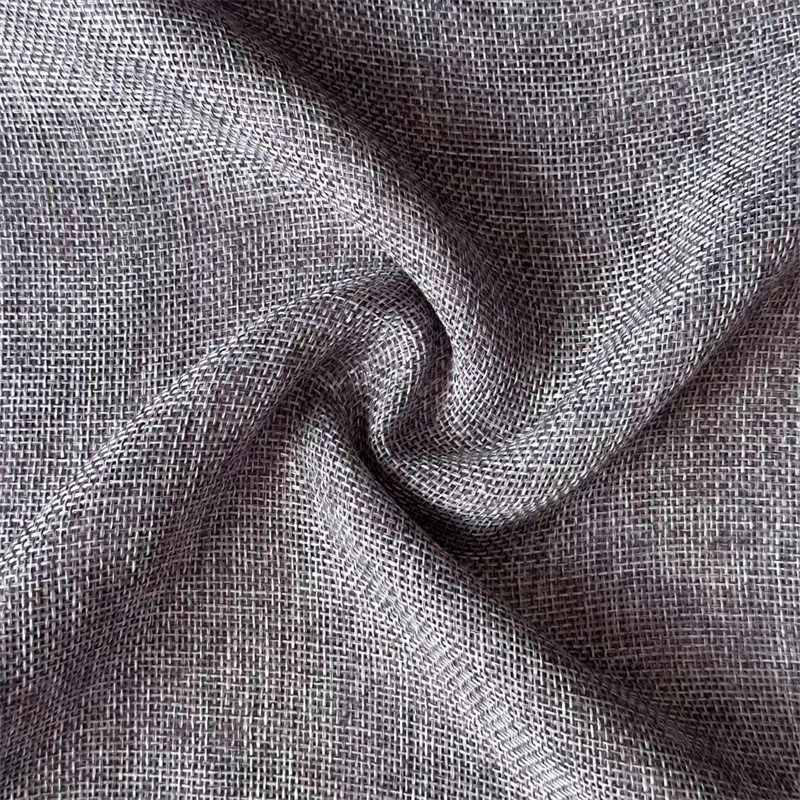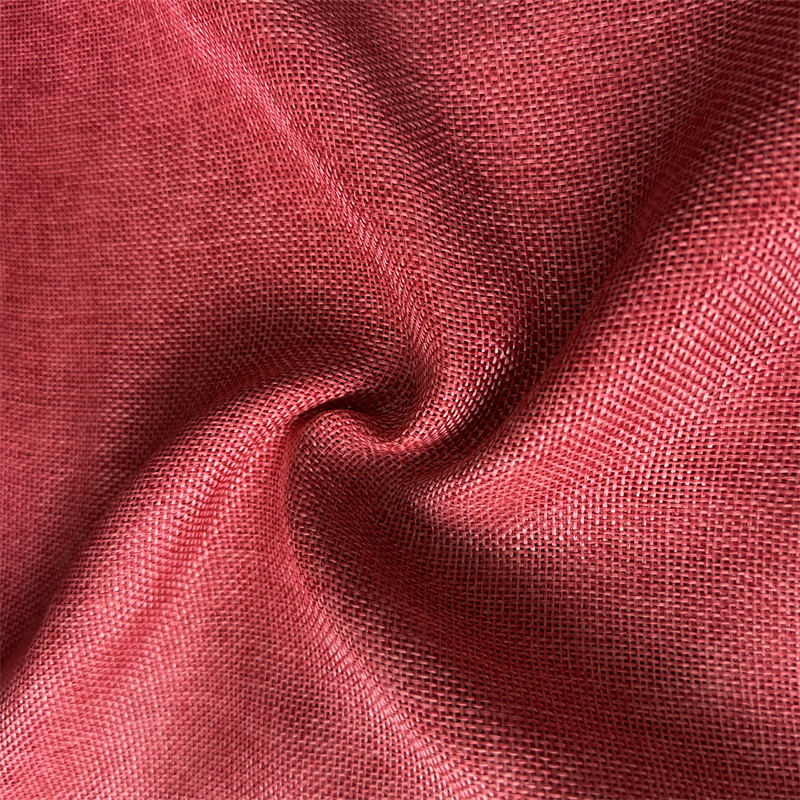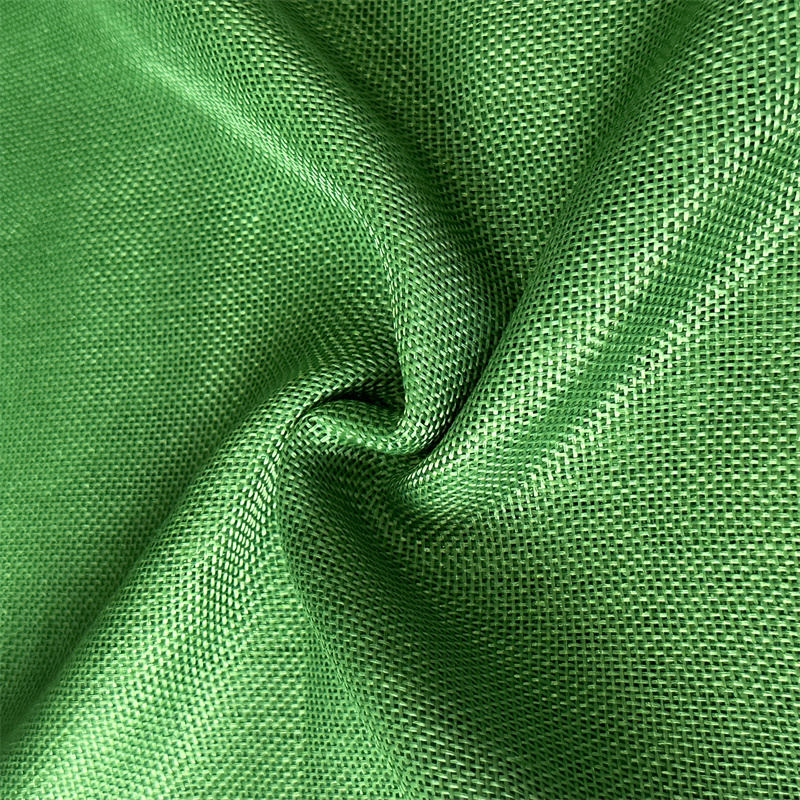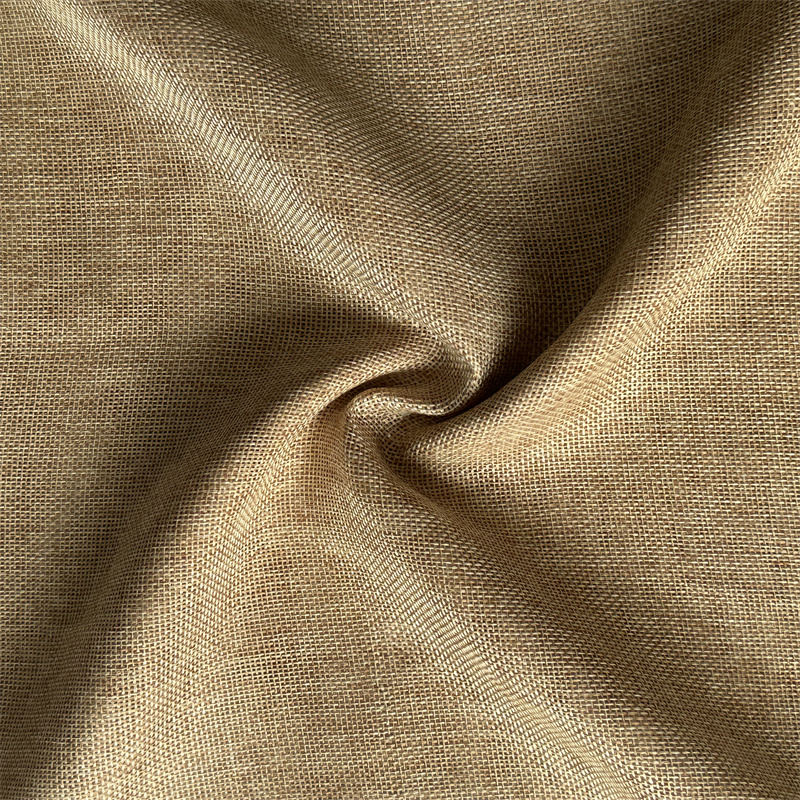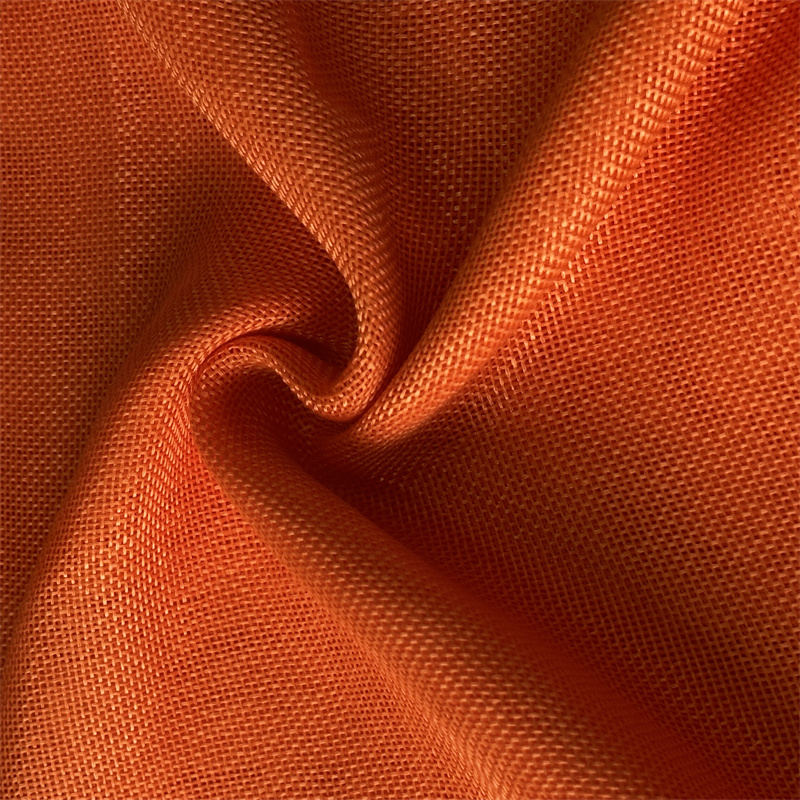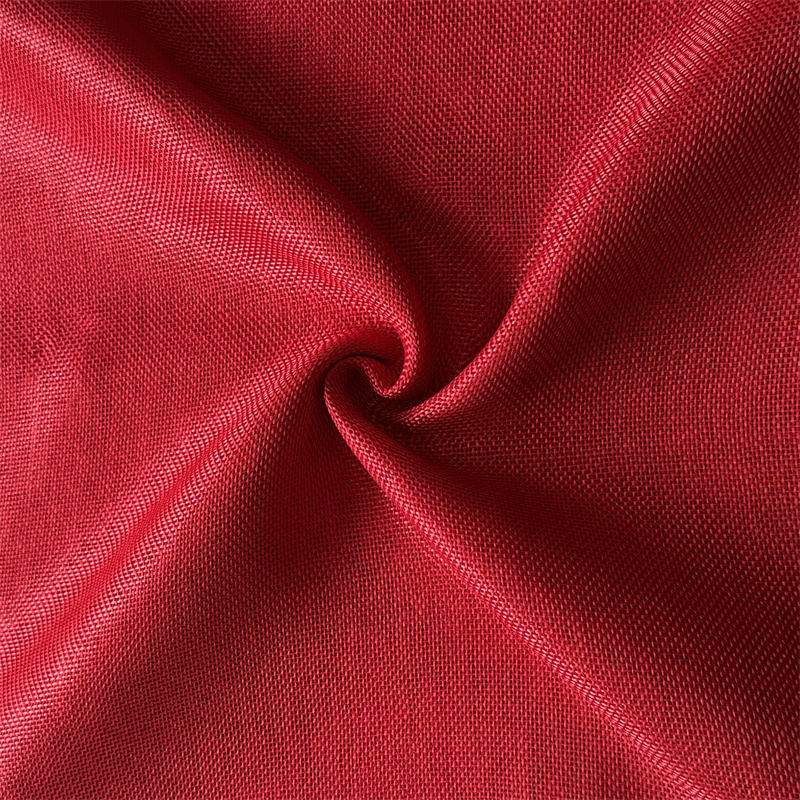In daily life, fabrics not only have practical functions, but also represent a lifestyle and aesthetic attitude. In recent years, Plaid Polyester Linen Fabric, a fabric that combines retro aesthetics with modern performance, has become popular in many fields such as home furnishings, clothing design, and DIY crafts. This fabric has become the first choice for many designers and consumers with its unique appearance, durability, and affordable price.
What is Plaid Polyester Linen Fabric?
Plaid Polyester Linen Fabric is a fabric that uses polyester fiber as the main raw material, imitates or blends the texture of linen, and combines it with a plaid pattern design. Its core advantage lies in the combination of the strength and wrinkle resistance of polyester fiber, and the natural texture and transparent appearance brought by the linen style. The surface of this fabric often has a coarse and fine imitation linen texture, presenting a natural and comfortable visual and touch, and is paired with a traditional or modern plaid pattern to create a design language that is both retro and fashionable.
Compared with real pure linen, this type of fabric is more affordable, has better processing performance, and is easier to care for and maintain, so it has great adaptability in multiple consumer levels and usage scenarios.
Why is plaid design so popular?
Plaid, as a pattern design with a long history, originated in Europe and can be traced back to the tribal identification totem of the Scottish Highlands. Today, it has long been freed from the limitations of ethnicity or dresses and has become a timeless design element in modern fashion and home furnishings. Plaid Polyester Linen Fabric combines this classic pattern with modern craftsmanship, allowing it to retain the traditional charm of plaid while being full of contemporary practicality.
The geometric structure and color regularity of the plaid pattern are extremely strong, which can visually create a sense of order, retro atmosphere and even modernity. Large plaids appear grand and open, while small plaids are more refined and lifelike. With the simple texture of imitation linen weaving, the two complement each other, forming a natural and rational aesthetic contrast, meeting the needs of different styles of space and clothing.
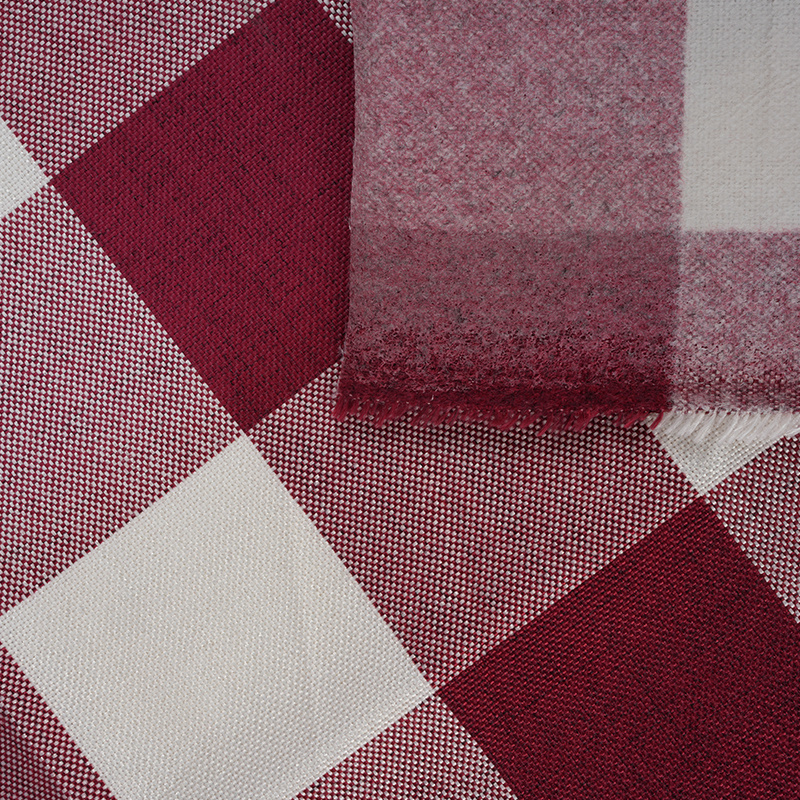
What are the advantages of the combination of polyester and linen?
Polyester fiber itself is a synthetic material with many advantages such as high strength, tensile strength, wrinkle resistance, non-fading, and low price. As a natural plant fiber, flax has the characteristics of strong breathability, good moisture absorption, natural feel, and visual simplicity. Although traditional flax has good texture, it is easy to wrinkle, shrink, expensive, and relatively complicated to clean and maintain.
Plaid Polyester Linen Fabric combines the advantages of both through linen-like textile technology or blending technology, retaining the "natural appearance" of flax and the "practical performance" of polyester, which is especially suitable for consumers who value both beauty and convenience in a fast-paced lifestyle. It will not shrink significantly after washing like pure flax, nor will it be prone to wrinkles that are difficult to recover, and is more suitable for frequent daily use.
What application scenarios are suitable for this fabric?
In terms of home fabrics, Plaid Polyester Linen Fabric can be used for soft furnishings such as curtains, sofa covers, tablecloths, cushions, and bedside background cloths. Because it has good drape and structural stability, it hangs naturally and is not easy to deform. With the decorativeness of the plaid pattern, it can easily create a variety of interior styles such as Nordic, pastoral, rural, American, French, etc.
In the field of clothing, this fabric is often used to make shirts, jackets, skirts, scarves and even light jackets. It has both natural style and light texture, which is very suitable for spring and autumn. Because its plaid pattern has a "college feel" or "retro feel", it is also common in campus style, British style, and retro street style designs.
In addition, for those who are keen on handmade DIY, Plaid Polyester Linen Fabric is also a very friendly fabric. Whether it is made into cloth bags, pillows, aprons, handmade dolls, or used as desktop decorations, background cloths, etc., its pattern is not picky, and the material is easy to cut, sew and shape.
What problems should be paid attention to when using it?
Although this fabric is relatively durable, reasonable use and maintenance can still significantly extend its life. First of all, it supports cold water machine washing, but it is not recommended to soak for a long time or wash at high temperature to avoid affecting the color and texture. Secondly, it is recommended to use low temperature when ironing to keep the imitation linen texture on the surface intact. It is best to avoid direct sunlight when drying to prevent fading.
In addition, for areas that are in long-term contact and friction, such as sofas and tablecloths, it is recommended to choose Plaid Polyester Linen Fabric with higher density or thicker styles to enhance abrasion resistance and anti-pilling ability.
Why is the market so fond of this type of fabric?
From the market trend, consumers' demand for fabric products is no longer limited to a single function, but a comprehensive experience of "beautiful, practical, convenient and environmentally friendly". The emergence of Plaid Polyester Linen Fabric just hits this core demand. It allows people to pursue natural texture without having to bear the high cost and maintenance burden brought by natural linen, nor do they have to worry about monotonous colors and design limitations.
For merchants, this fabric has strong adaptability, low production cost, diverse patterns, and flexible inventory management, making it a very cost-effective supply option. For end users, it provides a home textile and clothing solution that takes into account beauty, durability and comfort.
Is this fabric environmentally friendly?
Although polyester is a chemical fiber, with the development of environmental protection trends, more and more manufacturers have begun to use recycled polyester (rPET) for production, that is, by converting raw materials such as recycled plastic bottles into fibers. This not only reduces dependence on petrochemical resources, but also reduces waste emissions. In addition, the imitation linen process itself can reduce the overexploitation of natural linen resources, which is in line with the concept of sustainable development.
Therefore, in the future, driven by environmental protection policies and green consumer awareness, Plaid Polyester Linen Fabric is likely to play a more important role in "environmentally friendly imitation linen".
Summary: Plaid Polyester Linen Fabric is a fusion of fashion and practicality
Plaid Polyester Linen Fabric is not only a "substitute" for traditional fabrics, but also a product of the combination of modern textile technology and design concepts. It achieves high aesthetics at low cost, reproduces natural texture with modern performance, and achieves a satisfactory balance between design, life and environmental protection.
From home fabrics to daily clothing, from commercial decoration to handmade creativity, its application scenarios are constantly expanding. It can be foreseen that under the fast-paced, experience-oriented consumption trend, Plaid Polyester Linen Fabric will become a long-term main force in the fabric field, bringing beautiful, practical and stylish life experiences to more people.


 中文简体
中文简体 Español
Español